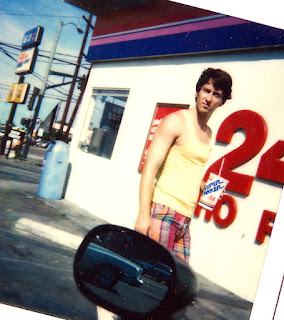Dealing with pests, including human ones, in suburban Phoenix from 1993 to today

No matter where you live on planet earth, there will be pests. Mine is the attitude of a gardener, and I try not to let myself get too upset with pests. Over the years I've learned different techniques to keep them as far away from me as possible, but I know that there's really no such thing as "extermination" of the pests that plague my neighborhood, including human ones. Here in my suburban neighborhood there really aren't too many pests. I discovered Amdro to control the stinging red ants, and I've never seen a scorpion here in over twenty years. I have block walls, so rabbits can't get into my garden and destroy my plants, but I know that in different areas of the valley, those pests are a consideration. As far as human pests, I haven't seen much either. Once many, many, years ago, while I was talking to a neighbor of mine, who had recently been bloodied up by getting in a fight with the people who were in a house nearby selling drugs, it occu...























